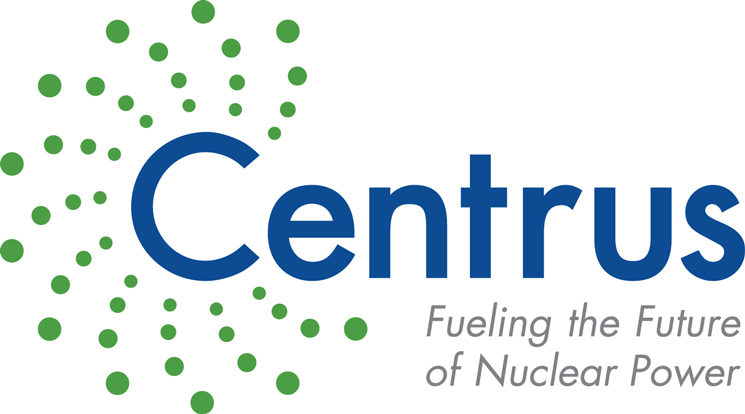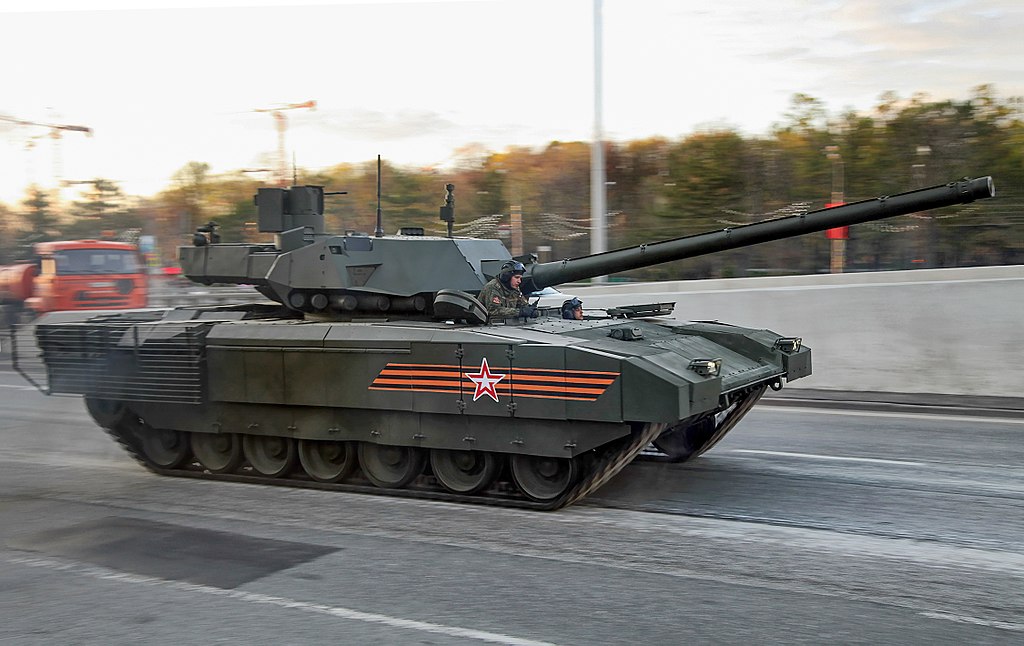The U.S. Department of Energy has just announced that it will award a contract to American Centrifuge Operating LLC (ACO), a subsidiary of Centrus Energy Corporation. The contract is for a demonstration of a method for production of high-assay low-enriched uranium (HALEU). The DoE said that ACO is the only company able to carry out the requirements of the contract.
Current nuclear power plants burn low-enriched uranium which contains less than five percent fissile uranium-235. Many of the designs being explored for advanced nuclear reactors require the use of more highly enriched uranium with five to twenty percent uranium-235 enrichment.
The HALEU Demonstration Program has two primary objectives. The first objective is the creation of a cascade of sixteen AC-100M centrifuges to produce nineteen and three quarters percent HALEU by October 2020. The second objective is to demonstrate that US-origin enrichment technology can produce HALEU. The DoE will be provided with a small amount of HALEU for research and development. The contract is expected to extend from January of 2019 to December of 2020. It includes an option for extension for an additional year.
The DoE notices says that only U.S.-origin technology can be used to produce HALEU for use in any advanced civilian or defense-related reactor application. The DoE requires that the contractor be both U.S.-owned and U.S.-controlled because of “the sensitive nature regarding access to and operation of US-origin enrichment technology.”
The AC-100M centrifuge was designed and constructed by ACO. The AC-100M is the only existing uranium enrichment technology that meets the criterion for the DoE contract. ACO and Centrus Energy both satisfy the DoE contract ownership and control criteria. ACO also has a license with the U.S. Nuclear Regulatory Commission which will allow it to meet the schedule laid out in the contract. ACO subleases a facility from the DoE at Piketon, Ohio. The facility is specifically designed for uranium enrichment.
The NRC issued the ACO license for the construction and operation of a uranium enrichment commercial plant at Piketon in 2007. The plant was constructed, and a cascade of centrifuges was operated for three years to demonstrate the long-term reliability of the enrichment technology before commercial operation. Operation of the facility halted in 2016 because ACO was unable to secure funding to move on to commercial operation.
Ohio Senator Rob Portman said that the DoE will invest one hundred and fifteen million dollars in the HALEU Program over the next three years. He said that the DoE contract announcement was a “milestone” for the Piketon site. He added that “Getting Piketon back to its full potential benefits the skilled workforce here, the surrounding local economy, and strengthens national energy and defense security.”
AOC told an interviewer that “If America wants to be competitive in supplying the next generation of nuclear reactors around the world, we need an assured, American source of high-assay, low-enriched uranium to power those reactors. We stand ready to work with the Department [of Energy] to get the proposed project under way as quickly as possible.”
At present, there are no facilities in the U.S. that can produce commercial quantities of HALEU. The Nuclear Energy Institute (NEI) has called for the development of national nuclear fuel cycle infrastructure in the U.S. to support the development of advanced reactors. The NEI president said, “DOE’s investment is a significant starting point in the HALEU fuel infrastructure. We appreciate [Energy] Secretary Perry’s attention to this urgent matter and look forward to working with DOE and Congress to ensure the US can compete globally to design and deploy advanced reactor technology.”
Author: Burt Webb
-

Nuclear Reactors 648 – The U.S. Deparrtment of Energy Has Contracted The Amercian Centrifuge Operating LLC To Produce High-Assay Low-Enriched Uranium Reactor Fuel
-
Nuclear News Roundup Jan 08, 2019
In December, Secretary of State Mike Pompeo announced that the Islamic Republic had tested a ballistic missile that could easily be equipped with a nuclear warhead. Mosaicmagazine.com
An expedited hearing on the future of a Jackson County nuclear plant is denied by a federal judge. Waff.com
Rosatom expects a site to be selected for Uzbekistan’s first nuclear power plant by the end of March and a construction contract to be signed by the end of this year. World-nuclear-news.org
-

Geiger Readings for Jan 08, 2019
Ambient office = 87 nanosieverts per hour
Ambient outside = 118 nanosieverts per hour
Soil exposed to rain water = 118 nanosieverts per hour
Crimini mushroom from Central Market = 103 nanosieverts per hour
Tap water = 92 nanosieverts per hour
Filter water = 86 nanosieverts per hour
-

Nuclear Weapons 368 – Soviet and Russian Nuclear Capable Tank
Recently I wrote a couple of posts about esoteric tactical nuclear weapons programs in the U.K. and the old Soviet Union that were abandoned as impractical. However, some tactical nuclear weapons were built and deployed.
In the 1950s, the Soviet Union mounted two 230mm recoilless rifles on a BTR-60 tank chassis. This system was called a “Reseda” launcher. They were designed to fire 360mm tactical nuclear shells a distance of about three miles. But this was a rather primitive weapon and was soon abandoned.
In the 1960s, the Soviets decided that they needed something more sophisticated in tactical nuclear weapons, so they ordered the design of a new generation of tactical nuclear launchers. “Taran” was the name given to a planned nuclear tank unit.
During this time the Soviets developed what was called a “missile tank”. The IT-1 tank had an anti-tank guided missile launcher which served as its primary weapon instead of the usual main gun. This concept was incorporated into the Taran project to create a missile tank that was equipped to fire big tactical nukes. The Taran could also fire anti-tank guided missiles. It was mounted on the chassis of a T-64 tank. The turret was completely redesigned and contained a rocket-gun.
The tactical nuclear projectile had a caliber of 300mm and weighted three hundred and thirty pounds. The actual warhead itself weighted about a hundred and forty pounds. The yield of the warhead was three tenths of a kiloton. Each Taran carried three of these projectiles. The technical specification for the Taran said that it had a range of about four miles but could actual fire up to seven miles. When fired in direct mode by line of sight, the projectiles should have landed within a hundred yards of the target. When fired in the indirect mode which required the projectiles to be locked onto a target, the accuracy dropped to within two hundred and fifty yards.
By the 1970, the Soviets lost interest in the Taran. The idea that a nuclear confrontation could be restricted to the actual battlefield was replaced by the fear that any use of tactical nukes could easily escalate to all out global nuclear war. It was determined that the accuracy of the Taran was not good enough considering the small yield of the actual warhead. It would have only worked if the enemy forces were concentrated in a small area.
The Soviet 195 tank prototype had the ability to fire 152mm artillery shells from its main gun. This means that the Object 195 should have been able to fire the 3BV3 tactical nuclear shell from its main gun. The yield of the 3BV3 is one kiloton.
One of the current main Russian tanks, called the Armata, was probably developed partly from the Object 195 tank prototype. It has the ability to be retrofitted with a 152mm gun in the future. Although some in the Russian military question the usefulness of a nuclear tank, someday the Russian army may have their own nuclear version of the Armata. -
Nuclear News Roundup Jan 07, 2019
President Donald Trump is dropping strong hints and suggestions that he would like to meet North Korean leader Kim Jong-un again this year. In his annual New Year’s address , Kim said the same. Nationalinterest.org
Both of Louisiana’s nuclear power plants have been federally relicensed to operate into the 2040s, Entergy announced Monday. Theadvocate.com
-

Geiger Readings for Jan 07, 2019
Ambient office = 88 nanosieverts per hour
Ambient outside = 83 nanosieverts per hour
Soil exposed to rain water = 80 nanosieverts per hour
Pinapple from Central Market = 158 nanosieverts per hour
Tap water = 100 nanosieverts per hour
Filter water = 93 nanosieverts per hour
-
Nuclear News Roundup Jan 06, 2019
With 22 nuclear power plants already running across the country and producing nearly 6,780 MW power, officials of Nuclear Power Corporation India Limited (NPCIL) believe that the country is way behind its target to have 16 per cent power production from nuclear energy. Tribuneindia.com
One of Britain’s nuclear deterrent submarines has suffered an “unusual” amount of damage as pictures emerge of HMS Vengeance returning from patrol with around 30 per cent of her sonar panels missing. Telegraph.co.uk
The Embalse nuclear power plant in Argentina has returned to service for another 30 years of operation following completion of upgrade work, Nucleoeléctrica Argentina announced on 4 January. The Embalse plant, which entered commercial operation in 1984, will resume supply of electricity to the national grid “very soon”, the company said, following tests at different power levels required before commercial operation can start. World-nuclear-news.org
Pope Francis said on Monday that the existence of nuclear weapons is functional to a logic of fear that has to do not only with parties in conflict, but with the entire human race. Plenglish.com
-

Geiger Readings for Jan 06, 2019
Ambient office = 89 nanosieverts per hour
Ambient outside = 78 nanosieverts per hour
Soil exposed to rain water = 79 nanosieverts per hour
Hawaiian Avocado from Central Market = 83 nanosieverts per hour
Tap water = 111 nanosieverts per hour
Filter water = 97 nanosieverts per hour
-
Nuclear News Roundup Jan 05, 2019
North Korea Could Have 100 Nuclear Warheads by 2020: Analyst nationalinterest.org
Two third-generation nuclear power reactors are slated to begin operation this year in Finland and France, after years of delays and budget overruns, S&P Platts’ Henry Edwardes-Evans reports. Oilprice.com
Signaling a harder edge for 2019, China threatens US carriers, an invasion of Taiwan, and nuclear war. Washingtonexaminer.com
Russia’s fleet of commercial nuclear power plants produced just over 204 TWh (gross) of electricity in 2018, exceeding the 202 TWh achieved in 2017 and setting a domestic record, state nuclear power station operator Rosenergoatom said. Nucnet.org
-

Geiger Readings for Jan 05, 2019
Ambient office = 104 nanosieverts per hour
Ambient outside = 193 nanosieverts per hour
Soil exposed to rain water = 92 nanosieverts per hour
Yam from Central Market = 88 nanosieverts per hour
Tap water = 95 nanosieverts per hour
Filter water = 84 nanosieverts per hour
Dover sole – Caught in USA = 89 nanosieverts per hour
